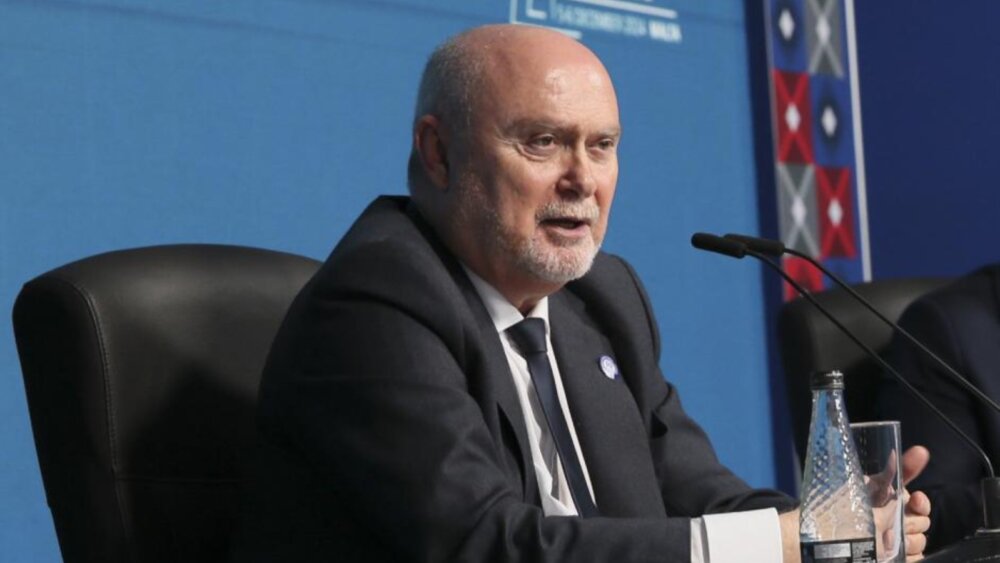Conventional arms control in Europe: What are the stakes and how can the OSCE help?
Conventional arms control in Europe may seem outdated, given the fact that the Cold War is over and stability in Europe is taken for granted. Yet, this mindset is wrong as predictable conventional forces in Europe contribute to strengthening trust and security among all participating States of the OSCE. The main international agreement in this context is the so-called Conventional Armed Forces in Europe (CFE) Treaty – often referred to as the “cornerstone of European security” – which was negotiated during the final years of the Cold War and signed by 30 state parties on 19 November 1990. It set equal limits on the amount of conventional weapons that NATO and the Warsaw Pact could deploy “from the Atlantic Ocean to the Ural Mountains.” The 30 state parties agreed that conventional armaments could not exceed “40,000 battle tanks, 60,000 armoured combat vehicles, 40,000 pieces of artillery, 13,600 combat aircraft and 4,000 attack helicopters.” The CFE Treaty was complemented by two other agreements: the 1992 Open Skies Treaty, a framework for a regime of unarmed observation flights over the territory of OSCE participating States, and the Vienna Document on Confidence- and Security-Building Measures, which will be discussed further down.
With the end of the Cold War, the division of the parties into two blocs ended and therefore an Agreement on Adaptation of the CFE Treaty was signed in 1999. The adapted version reflected the new realities in Europe and introduced national and territorial limits and also opens the Treaty to other states (the original CFE Treaty does not have an accession clause). In a diplomatic package deal, the ratification of the Adapted CFE Treaty, which is a legally-binding document, was linked to Russia’s compliance with the politically-binding OSCE Istanbul commitments, which include Russia’s military withdrawal from Georgia and Moldova.
To date, Russia has failed to fully comply with the Istanbul commitments, as there was only partial withdrawal of Russian forces from Georgia and Moldova. And NATO as a whole refuses to let the Adapted CFE Treaty enter into force until Russia delivers on its commitments. This led to a stalemate and eventually to Russia’s unilateral suspension of the original CFE Treaty in 2007. The expansion of NATO in 2004 and the US missile defense plans in Central and Eastern Europe also contributed to this negative development. Although the original CFE Treaty continues to be implemented by all state parties except Russia, the future of arms control in Europe remains uncertain.
Several efforts have been made since then to find a political compromise out of the deadlock, but so far with no success. What role can the OSCE play?
First, the OSCE participating States should work hard to strengthen and update the 2011 OSCE Vienna Document on Confidence- and Security-Building Measures, which is about information-sharing, inspections and evaluations in the military realm. The Vienna Document was first concluded in 1990 and has since been updated many times, most recently in 2011. The next re-issue of the Vienna Document is due in 2016. Hence, currently about 20 proposals and draft decisions covering several chapters of the Vienna Document are under discussion in the OSCE Forum for Security Cooperation (FSC). Proposals include the lowering of thresholds for prior notifications of military activities, enhancing inspection quotas and evaluation visit quotas, the inclusion of information on naval forces, and the creation of OSCE inspections for clarification on military activities giving rise to concern. The Vienna Document – a politically-binding agreement among the 57 OSCE participating States – can be seen as a very successful instrument with a high implementation rate and with on average 90 inspections and 45 evaluation visits conducted each year. To be sure, the Vienna Document cannot replace the CFE Treaty but it should serve as an important tool until a fully-fledged arms control regime (that includes Russia) is reestablished.
In addition, several other arms control initiatives are currently being discussed. The Ukrainian OSCE Chairmanship has prioritized conventional arms control and has recently issued an internal food for thought paper on this topic. The idea is to revitalize discussions on conventional arms control within the OSCE FSC. Furthermore, the OSCE Secretary General has organized an informal ‘Track II’ event on arms control designed to discuss the issue outside the OSCE. In this context, a meeting was held on 4 March 2013 at the Austrian national defense academy, outside the premises of the OSCE. And finally it seems that the topic of conventional arms control will become part of the Helsinki+40 process. This means that participating States recognize the importance of conventional arms control and the role it plays in establishing a “free, democratic, common and indivisible Euro-Atlantic and Eurasian security community.”
All of these initiatives are important but will be difficult to implement, given the political realities. Turkey continues to reiterate its mantra that arms control arrangements lie outside the acquis of the OSCE and that discussion within the OSCE can only be of a general nature. Also, the Russian Federation seems to be willing to discuss arms control only in connection with other issues, such as the US missile defense plans.
This makes everything more difficult, but should not prevent the OSCE from trying. The original CFE Treaty was negotiated within the framework of the then Conference on Security and Cooperation in Europe (CSCE) and can be seen as among the biggest achievements in strengthening the security of Europe. Similarly, new OSCE initiatives could help to bring arms control discussions back on track and out of the current stalemate.
To read the full text of the original CFE Treaty, click here.
To read the full text of the Adapted CFE Treaty, click here.
To read the 1999 OSCE Istanbul Summit Document, click here.
Comments
One response to “Conventional arms control in Europe: What are the stakes and how can the OSCE help?”
Leave a Reply
* Your email address will not be published



[…] first of the three agreements, the Conventional Arms Forces Treaty, began a slow death in 1999 when Russia refused to fully implement sections requiring the removal of Russian troops from […]